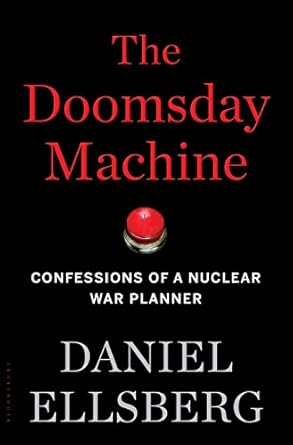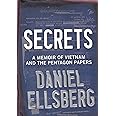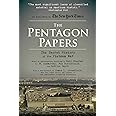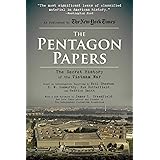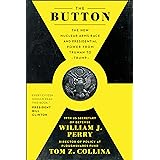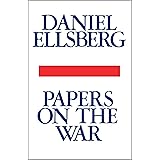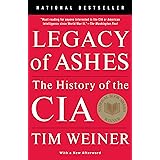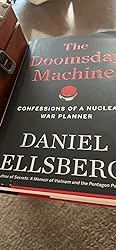
Enjoy fast, free delivery, exclusive deals, and award-winning movies & TV shows with Prime
Try Prime
and start saving today with fast, free delivery
Amazon Prime includes:
Fast, FREE Delivery is available to Prime members. To join, select "Try Amazon Prime and start saving today with Fast, FREE Delivery" below the Add to Cart button.
Amazon Prime members enjoy:- Cardmembers earn 5% Back at Amazon.com with a Prime Credit Card.
- Unlimited Free Two-Day Delivery
- Streaming of thousands of movies and TV shows with limited ads on Prime Video.
- A Kindle book to borrow for free each month - with no due dates
- Listen to over 2 million songs and hundreds of playlists
- Unlimited photo storage with anywhere access
Important: Your credit card will NOT be charged when you start your free trial or if you cancel during the trial period. If you're happy with Amazon Prime, do nothing. At the end of the free trial, your membership will automatically upgrade to a monthly membership.
Buy new:
$29.93$29.93
Ships from: Amazon Sold by: STARBOOKS LLC
Save with Used - Very Good
$23.97$23.97
Ships from: Amazon Sold by: Pearson Book Solutions





Download the free Kindle app and start reading Kindle books instantly on your smartphone, tablet, or computer - no Kindle device required.
Read instantly on your browser with Kindle for Web.
Using your mobile phone camera - scan the code below and download the Kindle app.

 Audible sample Sample
Audible sample Sample 


Follow the author
OK
The Doomsday Machine: Confessions of a Nuclear War Planner Hardcover – December 5, 2017

Explore your book, then jump right back to where you left off with Page Flip.
View high quality images that let you zoom in to take a closer look.
Enjoy features only possible in digital – start reading right away, carry your library with you, adjust the font, create shareable notes and highlights, and more.
Discover additional details about the events, people, and places in your book, with Wikipedia integration.
Purchase options and add-ons
Shortlisted for the Andrew Carnegie Medal for Excellence in Nonfiction
Finalist for The California Book Award in Nonfiction
The San Francisco Chronicle’s Best of the Year List
Foreign Affairs Best Books of the Year
In These Times “Best Books of the Year"
Huffington Post’s Ten Excellent December Books List
LitHub’s “Five Books Making News This Week”
From the legendary whistle-blower who revealed the Pentagon Papers, an eyewitness exposé of the dangers of America's Top Secret, seventy-year-long nuclear policy that continues to this day.
Here, for the first time, former high-level defense analyst Daniel Ellsberg reveals his shocking firsthand account of America's nuclear program in the 1960s. From the remotest air bases in the Pacific Command, where he discovered that the authority to initiate use of nuclear weapons was widely delegated, to the secret plans for general nuclear war under Eisenhower, which, if executed, would cause the near-extinction of humanity, Ellsberg shows that the legacy of this most dangerous arms buildup in the history of civilization--and its proposed renewal under the Trump administration--threatens our very survival. No other insider with high-level access has written so candidly of the nuclear strategy of the late Eisenhower and early Kennedy years, and nothing has fundamentally changed since that era.
Framed as a memoir--a chronicle of madness in which Ellsberg acknowledges participating--this gripping exposé reads like a thriller and offers feasible steps we can take to dismantle the existing "doomsday machine" and avoid nuclear catastrophe, returning Ellsberg to his role as whistle-blower. The Doomsday Machine is thus a real-life Dr. Strangelove story and an ultimately hopeful--and powerfully important--book about not just our country, but the future of the world.
- Print length432 pages
- LanguageEnglish
- PublisherBloomsbury USA
- Publication dateDecember 5, 2017
- Dimensions6.45 x 1.57 x 9.61 inches
- ISBN-101608196704
- ISBN-13978-1608196708
Books with Buzz
Discover the latest buzz-worthy books, from mysteries and romance to humor and nonfiction. Explore more
Frequently bought together
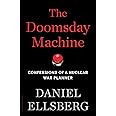
Similar items that may deliver to you quickly
Editorial Reviews
Review
"The Doomsday Machine is being published at an alarmingly relevant moment, as North Korea is seeking the capability to target the United States with nuclear missiles, and an unpredictable president, Donald Trump, has countered with threats of 'fire and fury.' "- New York Magazine
"A groundbreaking and nightmare-inducing account of how the whole mad system works." - Esquire
"One of the best books ever written on the subject--certainly the most honest and revealing account by an insider who plunged deep into the nuclear rabbit hole's mad logic and came out the other side." - Fred Kaplan, Slate
"Daniel Ellsberg's The Doomsday Machine (Bloomsbury) unpacks the power of our atomic arsenal." - Vanity Fair
"Ellsberg, the dauntless whistle-blower, has written a timely plea for a reassessment of a weapons program that he describes as 'institutionalized madness.' " - Best Books of the Year 2017, The San Francisco Chronicle
"A passionate call for reducing the risk of total destruction . . . Ellsberg's effort to make vivid the genuine madness of the 'doomsday machine,' and the foolishness of betting our survival on mutually assured destruction, is both commendable and important." - Editor's Choice, New York Times Book Review
"Brilliantly and readably tackles an issue even more crucial than decision-making in the U.S. intervention in Vietnam, which is policy on the handling of nuclear weapons." - 10 Excellent December Books, Huffington Post
"This candid and chilling memoir describes how Ellsberg came to recognize that the U.S. military’s approach to preparing for nuclear war was terrifyingly casual. If war came, the United States was ready to obliterate not only the Soviet Union but also China--a plan that would have immediately produced 275 million fatalities and then led to another 50 million, owing to the effects of radiation." - Foreign Affairs, "Best Books of the Year"
"Gripping and unnerving . . . A must-read of the highest order, Ellsberg's profoundly awakening chronicle is essential to our future." - starred review, Booklist (“High Demand Backstory”)
"Ellsberg’s brilliant and unnerving account makes a convincing case for disarmament and shows that the mere existence of nuclear weapons is a serious threat to humanity." - starred review, Publishers Weekly
"Noted gadfly Ellsberg returns with a sobering look at our nuclear capabilities . . . When the author hurriedly copied the contents of his RAND Corporation safe to reveal, in time, what would become known as the Pentagon Papers, that was just the start of it. He had other documents, even more jarring . . . Especially timely given the recent saber-rattling not from Russia but North Korea and given the apparent proliferation of nuclear abilities among other small powers." - Kirkus Reviews
"His point is simple: We and our political leaders must stop thinking of nuclear war as a manageable risk. We must stop thinking of the possibility of nuclear war as normal." - St Louis Post-Dispatch, "Our Favorite Books of 2017"
"The Doomsday Machine: Confessions of a Nuclear War Planner blends personal recollections and historical analysis with a set of considered proposals for reducing the threat of apocalyptic war. Many years in the making, it’s a book that arrives at an opportune moment." - San Francisco Chronicle
"Ellsberg’s book, perhaps the most personal memoir yet from a Cold Warrior, fills an important void by providing firsthand testimony about the nuclear insanity that gripped a generation of policymakers . . . The Doomsday Machine is strongest as a portrait of the slow corruption of America’s national security state by layer upon layer of secrecy. He relates how the Cold War, the nuclear build-up and trillions of dollars of defense spending were compromised by information purposely withheld from the policymakers and politicians who debated and shaped our path" - Washington Post
"History may remember Ellsberg as the whistleblower who leaked the Pentagon Papers and helped end the Vietnam War, but his alarmingly relevant new book should also assure his legacy as a prescient and authoritative anti-nuclear activist. The Doomsday Machine, which takes its title from Dr. Strangelove, reads like a thriller as Ellsberg figures out that America's pledge never to attack first was fiction and that the so called 'fail-safe' systems are prone to disaster." - Los Angeles Times
"Ellsberg writes briskly in the service of opinions formed by long and sober study. What he means is never in doubt and it is always interesting . . . He is a vigorous writer with a gift for dramatic tension and the unfolding of events as they cascade toward disaster." - Thomas Powers, New York Review of Books
"Ellsberg presents his thoughts on how best to dismantle a program that could lead to global annihilation, while once again proving how deeply disturbing and radically ignorant our country's leaders are when it comes to thermonuclear warfare." - SF Weekly
"The Doomsday Machine is chilling, compelling and certain to be controversial." - Minneapolis Star Tribune
"Is it really necessary to declare that a knowledgeable, detailed and passionate book about the odds-on danger of cataclysmically destroying all human life on earth is important? Daniel Ellsberg's The Doomsday Machine demands to be widely read. Its claims should be examined by experts, corroborated, rebutted, taken up by Congressional committees (alas, unlikely) and generally forced into public consciousness . . . The Doomsday Machine is engrossing and frightening." - Peter Steinfels, America Magazine
"In the era of barbed insults regarded as precursors to nuclear threat, the warnings yielded by The Doomsday Machine have become required reading. . . . Daniel Ellsberg's title evokes Kubrick's film on purpose, a metaphor that culminates in his definition of the 'Strangelove Paradox.' The United States has thousands of 'Doomdsay Machine' weapons and hundreds of 'fingers on the button.' The question the reader must ask, now mortified by the necessary horrors of Ellsberg's masterpiece, is how to save the world" - Nuclear Age Peace Foundation
"The Doomsday Machine is, in fact, a Bildungsroman, a tale of one intellectual’s disillusionment with the country in which Ellsberg had placed so much trust. It reveals how the horrors of US nuclear war planning transformed a man of the establishment into a left-wing firebrand." - Los Angeles Review of Books
"[The Doomsday Machine is] an important tome that’s as optimistic as it sounds. It’s vital reading that reminds people that both poor planning--such as the US under Dwight Eisenhower having no contingency in place for only bombing the USSR into dust, but it being a package deal with China, something that confirmed the rigidity of these planners as well as their blithely democidal tendencies--and the potential for simple mistakes still run rampant in US nuclear policy." - antiwar.com
"Gripping . . . The Doomsday Machine is essential reading--both a terrifying ‘Doctor Strangelove’ saga and a hopeful consideration of future scenarios." - Mercury News
"Ellsberg's book is essential for facilitating a national discussion about a vital topic." - starred review, Library Journal
"Alarming, galvanizing, and brilliantly written." - Barnes & Noble Review
"Given the current crises, both domestic and international, the timeliness of Ellsberg’s exposures―and warnings―is unnerving... The Doomsday Machine is not for the faint of heart, but its sense of urgency should make it required reading, and―more importantly―a call to action." - BookPage
"From a close insider's perspective, he describes how the U.S. came to create and adjust this potentially world-destroying arsenal, how presidents have used it to threaten foreign leaders, and the responses of other nuclear powers. We have narrowly avoided many previous crises, but he fears that the current U.S. administration could charge straight into a worst-case scenario. This book deserves to be widely read, discussed and acted upon." - Shelf Awareness
"In his recent book The Doomsday Machine, Daniel Ellsberg reports that the basic elements of US preparations for nuclear war have been little changed over the past three generations . . . Ellsberg's warning needs to be taken seriously." - Truthout
"Speaking with the authority of an insider who was intimately involved with nuclear strategy and policymaking at the highest levels, he reveals that practically everything the American public believes about nuclear war and nuclear weapons is, quite simply, a 'deliberate deception.' . . . One can only hope Daniel Ellsberg's singular combination of moral credibility and personal knowledge will work its magic one more time to forestall an even greater tragedy than the Vietnam War." - Undark Magazine
"The book is a revelation, and it raises so many essential questions that have been very inadequately discussed about nuclear war, realistic appraisal of its consequences and nuclear winter. Ellsberg places his discussion inside a history of the law of war since the early 20th century. . . . Ellsberg has performed his greatest public service yet with the publication of this book." - The Concord Monitor
"A treasure of finely woven secrets and insights lies in Daniel Ellsberg’s new memoir, The Doomsday Machine: Confessions of a Nuclear War Planner. Their importance grows each day that the nuclear stand-offs on the Korean Peninsula, in South Asia and between the United States and Russia go unabated." - Carnegie Endowment for International Peace
"Shocking . . . The Doomsday Machine is full of deeply disturbing revelations. The book sometimes reads like a thriller, as Ellsberg describes his mounting horror and revulsion over the discoveries he made over the years." - Five out of Five, Berkleyside
"Daniel Ellsberg's latest book is a disturbing analysis about how close we have been--and still are--to a nuclear holocaust." - Buffalo News
"As with the Pentagon Papers, Ellsberg has performed a public service in writing a candid book that states where we are more than seven decades into the nuclear era. This book provides abundant evidence that describes our nuclear predicament and how we got here, as well as ideas and insights that may help extricate us from the potentially devastating path we now walk." - Arms Control Today
"This is a compelling and alarming book, and it should be read by anyone who cares about the human future." - The Montreal Gazette
"There is much in Ellsberg’s book that is new, and may even be revelatory to many readers . . . To be sure, Ellsberg is hardly the first Jeremiah to warn that nuclear war is ‘a catastrophe waiting to happen' . . . Ellsberg is, nonetheless, the most recent, the best informed--and plainly the most motivated--to remind us, since then, of our present and continuing danger." - H-Diplo
"An absolutely imperative read in this day and age of Trump, Putin, Kim Jong Un, and global instability." - Helen Caldicott, Founding President, Physicians for Social Responsibility
"This long-awaited chronicle from the father of American whistle-blowing is both an urgent warning and a call to arms to a public that has grown dangerously habituated to the idea that the means of our extinction will forever be on hair-trigger alert." - Edward Snowden
"Nobody could have told this horrifying story better than Daniel Ellsberg. He introduces us to the men who have coldly and with a God-like sense of righteous entitlement, put in place a plan that can, on a whim--not virtually, but literally--annihilate life on Earth. What a book." - Arundhati Roy, anti-nuclear activist and author of THE MINISTRY OF UTMOST HAPPINESS and the Pulitzer Prize-winner THE GOD OF SMALL THINGS
"A fascinating and terrifying account of nuclear war planning by a consultant from the RAND Corporation at the highest levels of government in the Kennedy administration. Ellsberg tells us of the close calls with nuclear war and of the policies developed then that still threaten the planet with annihilation. I couldn't put the book down." - Frances FitzGerald, Pulitzer Prize-winning author of FIRE IN THE LAKE
About the Author
Product details
- Publisher : Bloomsbury USA; First Edition (December 5, 2017)
- Language : English
- Hardcover : 432 pages
- ISBN-10 : 1608196704
- ISBN-13 : 978-1608196708
- Item Weight : 1.64 pounds
- Dimensions : 6.45 x 1.57 x 9.61 inches
- Best Sellers Rank: #463,043 in Books (See Top 100 in Books)
- #81 in Arms Control (Books)
- #215 in Nuclear Weapons & Warfare History (Books)
- #13,422 in United States History (Books)
- Customer Reviews:
About the author

Discover more of the author’s books, see similar authors, read author blogs and more
Customer reviews
Customer Reviews, including Product Star Ratings help customers to learn more about the product and decide whether it is the right product for them.
To calculate the overall star rating and percentage breakdown by star, we don’t use a simple average. Instead, our system considers things like how recent a review is and if the reviewer bought the item on Amazon. It also analyzed reviews to verify trustworthiness.
Learn more how customers reviews work on AmazonReviews with images
-
Top reviews
Top reviews from the United States
There was a problem filtering reviews right now. Please try again later.
Ellsberg will be remembered for releasing The Pentagon Papers about the Vietnam War; but, at the same time that he was copying The Pentagon Papers, Ellsberg also copied secret records relating to U. S. nuclear strategy. He planned to release these as well—but these copies apparently were inadvertently buried under a condominium. In their absence, Ellsberg wrote this volume, over a period of years, based on the notes he prepared as a consultant with the RAND Corporation, his experiences as an adviser to top government officials, declassified documents, and various secondary works.
In 1961, the Joint Chiefs of Staff estimated that a U.S. nuclear attack would result in 600,000,000 deaths, of which 100,000,000 would be in nations outside of the USSR and China (the principal targets). Ellsberg was horrified by these estimates, which represented an “evil beyond any human project ever.” When atomic bombs gave way to much more lethal hydrogen bombs, planners balanced the equation, not by reducing the number of bombs, but by increasing the number of projected casualties.
A decade after the JCS presented these casualty figures, scientists, whose plans to study the planet Mars, had been disrupted by dust storms that obscured that planet, turned their attention to the effects of the resulting dust cloud, and then to the effects of similar dust clouds on the earth. Eventually, investigators calculated that the smoke and dust from large numbers of nuclear blasts might obscure the sun, causing drastic drops in temperature—a “nuclear winter” that would paralyze agricultural production and perhaps doom humanity to follow the path taken by the dinosaurs when an asteroid struck the earth, blocking out the sun in a similar manner. (Ellsberg does not mention the possibility that nuclear warfare might damage the ozone, and expose the earth to dangerous radiation from the Sun.) Opinions differ regarding the probability and severity of a nuclear winter, but it is striking that for decades no one undertook a major effort to study the possible effect of nuclear explosions apart from their damage to target areas. Ellsberg notes that, in their quest to develop the bomb, scientists were willing to risk the slim chance that an atomic explosion might ignite the earth’s atmosphere.
The U.S. and the USSR based their battle plans on the assumption that Europe would be the major battlefield. The Soviets, with massive conventional forces in place, and with interior lines of communication, would have advantages in a conventional war that the NATO countries could not hope to match. Hence, the USSR relied on conventional forces, and required only sufficient nuclear weapons to deter a U.S. nuclear attack. The U.S., on the other hand, unable to match the Soviets in a conventional war, would turn much more quickly to nuclear options. Put another way, Eisenhower chose to rely on nuclear weapons because an attempt to match Soviet conventional forces in Europe would be too costly. Even before the USSR had nuclear weapons, the Strategic Air Command was prepared to drop atomic bombs on the Soviet Union. The Americans and the Soviets both regarded their nuclear strategies as defensive; but for the U.S. defensive strategy involved first use of nuclear weapons. Ellsberg does not tell us if anyone considered whether Europe would suffer more from victory in a nuclear war or defeat in a conventional war.
Since U.S. policy makers regarded all the Communist countries as a single monolithic bloc, nuclear war plans contemplated a massive simultaneous attack on both the USSR and China, without regard to the proximate causes of any war. Contemplating the deployment of thousands of warheads, planners developed intricate schedules, so the blast from one nuclear warhead would not prevent the delivery of nuclear warheads on other targets. This necessitated timing the detonation of each warhead down to the minute and even the second. Considerable time was required to work out this bombing schedule, so it could not be modified to fit unanticipated situations. Consequently, planners could not make last minute revisions to limit an attack to either the USSR or China. Thus, China would be attacked, regardless of whether it had done anything to provoke an attack. Moreover, it was extremely improbable that this plan could be implemented as planned, since it took no account of communication problems or meteorological conditions. As with many military plans, planning was precise, but execution would inevitably be less so.
Faced with the contingency of nuclear war, planners considered the possibility of launching a successful first strike that would eliminate the opponent’s ability to retaliate. This involved, on the one hand, actually launching such an attack, and, on the other hand, ensuring that no first strike attack could prevent a retaliatory response (second strike). This book takes its title from the movie, “Dr. Strangelove,” in which the Soviets had developed a retaliatory system (“Doomsday Machine”) that would automatically blanket the earth with fatal radioactivity in the event of a nuclear attack on the USSR. But apart from such a system, both the U.S. and the USSR delegated to subordinate officers the ability to launch nuclear attacks on their own, without authorization from central headquarters, if they believed their country was undergoing a nuclear attack. This situation stimulated Ellsberg’s interest in preventing unauthorized launches, and in limiting initial nuclear attacks to military targets, thus preserving the other side’s command and control systems, which might be able to limit a nuclear war once it began. He considered it essential that there would be a government with which to negotiate, a government that could call an end to nuclear attacks. But Ellsberg concedes that it would be difficult to limit an attack to military targets, and communication between belligerents might be very slow, or impossible. Military officers distrusted central direction, especially when prompt action seemed essential; hence, in practice, some decisions about nuclear attacks were delegated down to individual pilots and submarine commanders, and many officers developed ways to circumvent prescribed “fail-safe” procedures.
During World War II, several countries were carrying on atomic research. The Germans had been leaders in nuclear research before the Second World War; a Russian nuclear research program had begun in 1939 (with the advent of the Manhattan Project, American scientists stopped publishing articles on related subjects, causing Russian scientists to suspect that a U.S. nuclear program was in progress). And the Japanese began their program in 1941—a Japanese physicist was perhaps the first to envision a hydrogen bomb. Thus, the assumption of some American planners that the U.S. could maintain a monopoly on nuclear weapons for a considerable time was mistaken. Nonetheless, some postwar policies rested on this assumption.
Ellsberg explains how the threat of nuclear weapons was often invoked for diplomatic purposes. He lists 25 “nuclear crises” in which the U.S. threatened or considered tactical or strategic nuclear strikes. He deals with Hiroshima, “Brinkmanship,” and the Berlin Crisis. But he writes at greater length about the Cuban Missile Crisis. Ellsberg seems to agree with Robert McNamara that this was really a political crisis rather than a military one. But, in fact, the threat of nuclear war was much greater than Americans realized at the time. U.S. leaders focused on the threat posed by strategic missiles in Cuba; they were unaware that the Soviets had deployed tactical nuclear weapons there and planned to employ them against a possible U.S. attack (which American military leaders wanted to launch). Nor were they aware that Soviet submarines in the Caribbean were armed with nuclear tipped torpedoes. U.S. surface vessels made threatening moves against these submarines, and it was only the decision by perhaps half a dozen Soviet naval officers that prevented a nuclear attack on U.S. navy vessels, which could have triggered a major war. A disconcerting epilogue to this episode is that, after they returned to the USSR, these Soviet officers were sharply criticized for failing to fire their nuclear torpedoes.
Ellsberg’s assessment of American leaders and their policies is interesting. He discusses the decisions of Truman, Eisenhower, John Foster Dulles, Kennedy, Johnson, and Nixon. He describes how Nixon wanted to use nuclear weapons in Vietnam, and speculates that Nixon ordered the White House “plumbers” to break into the Brookings Institute to steal documents related to this plan.
This book focuses on the years in which Ellsberg was closely associated with nuclear weapons policy, so it does not describe subsequent events. Its stress is on deployment and control of nuclear weapons. To some extent, it neglects such other developments as anti-ballistic missile systems and civil defense measures. It does not deal with the Partial Nuclear Test Ban Treaty (1963), or significant diplomatic efforts such as those leading to the Anti-Ballistic Missile Treaty (1972), the Strategic Arms Limitation Treaty (1972), and the Intermediate-Range Nuclear Forces Treaty (1987). Ellsberg hopes to eliminate nuclear weapons entirely; but such arms control agreements constitute initial steps toward reducing the nuclear threat.
Carl Sagan has said, “The nuclear arms race is like two sworn enemies standing waist deep in gasoline, one with three matches, the other with five.” The one with “only” three feeling two or three more matches would bring security. A nuclear war to “protect” Western Europe might actually destroy it. And the country that launched a successful first strike and eliminated its adversary’s nuclear arsenal might be doomed by a nuclear winter produced by its own missiles. Many years ago, a prominent American politician said that, if only two persons survived a nuclear war, he would want them to be living in North America. That, perhaps, would be victory in a nuclear war. The 35 pages of notes in the back matter indicate the sources on which Ellsberg relied. The volume has a good 24-page index—strange to say, it contains only one entry for “madness.”
The second section of the book emphasizes the folly of current nuclear strategy. Even a “successful” attack by the US against Russia would immediately kill millions of civilians, cause millions more to die in NATO and neutral countries from fallout, and lead to worldwide famine as smoke from firestorms blocked sunlight for years. Ellsberg calls for a substantial reduction in land-based ICBMs — unilaterally if necessary — and a complete reevaluation of nuclear planning.
The book also discusses the shift in US policy from an abhorrence of bombing civilian populations to adoption of it as a strategic doctrine in World War II, eventually leading to a nuclear plan that anticipated over half a billion civilian deaths in a conflict with the USSR and China.
In places the book could have been more tightly edited, but even apart from its immense value from a policy perspective, it makes for fascinating reading.
Top reviews from other countries
Recommended reading; The Devil's Chessboard by David Talbot, JFK And the Unthinkable by Robert J. Douglas, Super Imperialism 3rd Edition by Michael Hudson, Dark Money by Jane Mayer, and Democracy in Chains by Nancy MacLean...
The first two books lay out the horrific control over the U.S. the CIA.... It will give you a thorough understanding of the true greatness of JFK's visionary enlightenment towards nations living in peace without nuclear threat.... MIC could not have that. They strove to make sure of that.
The remaining three books will give you the greed that drives the Military Industrial complex that drives us ever closer to the complete insanity of world ending nuclear war....
Ellsberg lays the remainder of that threat, out in horrific, articulate detail.....
Soine chilling facts.
But goes on and on forever on the same lines
Perhaps lacked the time to make it shorter
Good read anyway


